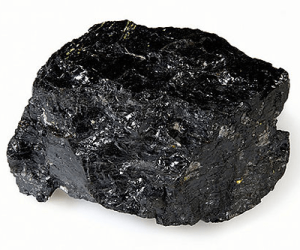All about Gilsonite special product
Gilsonite, a naturally occurring form of asphalt, is primarily found in the Uinta Basin of Utah and parts of Colorado. The American Gilsonite Company plays a significant role in the extraction and processing of this unique ore. Gilsonite is characterized by its glossy black appearance and is commonly referred to as asphaltite, a term that highlights its hydrocarbon composition. The gilsonite veins are typically located in vertical formations, which can be mined using specialized techniques, including the use of chipping hammers to extract the material from the earth. The Utah Geological Survey has documented the extensive deposits of this valuable resource, emphasizing its importance in both local and national markets.
The mining of gilsonite has been a cornerstone of economic activity in northeastern Utah. Historically, the gilsonite mining industry has contributed significantly to the region’s development, with the American Gilsonite Company’s refinery operating continuously to process the mined product. This refinery was established to produce a range of products, including asphalt emulsion and gilsonite sealers, which are widely used in asphalt sealcoating applications. The company’s commitment to providing high-quality additives has positioned it as a leading player in the market, facilitating the first regular shipments of gilsonite to various industries.
In addition to its role in the asphalt industry, gilsonite is also used in diverse applications, including cement production and as a solvent in various chemical processes. The gilson asphaltum company has been instrumental in promoting the use of gilsonite as a functional additive in numerous products. Its unique properties enhance the durability and performance of asphalt products, making it an invaluable resource. The versatility of gilsonite underscores its significance within the Uinta Basin, where it is mined not only for local consumption but also for export to wider markets.
As research progresses, the prospective applications of gilsonite are broadening, necessitating additional exploration and investment in the basins of Utah and Colorado. The Gilsonite Company is committed to sustainable mining practices while optimizing the use of this exceptional mineral.
Development of Gilsonate, a naturally occurring hydrocarbon, can be traced back to the late 19th century, specifically within the Uinta Basin of Utah. The American Gilsonite Company was among the pioneers of gilsonite mining, focusing on the extraction of gilsonite veins that are rich in asphaltum. These vertical veins contain gilsonite, a unique type of natural asphalt often referred to as asphaltite. The Gilsonite field, located primarily in northeastern Utah, has been a significant source of high-quality ore for various industrial applications, including the production of asphalt emulsion and as an additive in cement and sealcoating products.
In the early 20th century, the American Gilsonite Company’s refinery began operations to process the extracted gilsonite, marking a pivotal moment in the development of the gilsonite industry. The first regular shipments of gilsonite were made during this time, establishing a thriving market for gilsonite sealers and other related products. The Utah Geological Survey has documented the extensive gilsonite mining activities in this region, emphasizing the strategic importance of the Basin of Utah and Colorado for the extraction of this valuable resource. In addition to its use as a sealant, gilsonite is also employed as a solvent in various chemical processes, further underscoring its versatility.
Over time, companies such as the Gilson Asphaltum Company and Ziegler Chemical have emerged, enhancing the commercial viability of gilsonite. The gilsonite mined in the area has not only contributed to local economies but has also positioned Utah as a key player in the global market for high-performance asphalt products. As gilsonite is mined, small amounts of uintaite may also be found, which is another form of asphalt. The ongoing research and development efforts in the region continue to reveal the full potential of gilsonite and its applications, solidifying its status as a valuable
What is gilsonite used for?
Gilsonite, a naturally occurring hydrocarbon resin, is primarily extracted from the Uintah Basin in Utah, where it is found in substantial quantities within the gilsonite field. This mineral, now known as gilsonite or North American asphaltum, possesses unique properties that make it invaluable across numerous industries. The oil company sector has shown particular interest in this resource, as gilsonite is added to oil products to improve their performance and stability. Its ability to enhance the viscosity and reduce the volatility of petroleum products makes it a preferred additive for various oil-related applications. Furthermore, gilsonite is added to iron during the manufacturing process, where it serves as a binding agent that enhances the quality and durability of the final product.
The gilsonite company that was jointly established to mine this resource has made significant contributions to the local economy. Regular shipments of gilsonite began shortly after the company’s refinery was operating, marking a critical milestone for the region. As a result, local businesses have benefited from the influx of jobs and investment associated with the extraction and processing of gilsonite. Asphalt sealcoating direct is another application, where gilsonite is utilized to enhance the durability and longevity of asphalt surfaces. This use underscores the versatility of the mineral, which has hundreds of industrial applications that extend beyond the oil and construction sectors.
It is essential to clarify that gilsonite isn’t merely a byproduct but a distinct mineral that has garnered significant attention for its multifaceted uses. The ability to break the gilsonite while avoiding degradation of its properties is crucial for maximizing its utility across various applications. The Utah resource has emerged as a critical component within the broader spectrum of industrial minerals, solidifying its role in enhancing the performance of numerous products. The transformation of the American Gilsonite Company has further propelled the commercialization of this valuable resource, ensuring that the legacy of gilsonite continues to thrive in both local and global markets.
How is gilsonite formed?
Gilsonite is a natural hydrocarbon resin that is primarily found in the Uintah County region of Utah. Formed over millions of years through the geological processes affecting organic material, this unique substance is distinguished by its shiny, black appearance and brittle texture. The formation of gilsonite occurs as ancient plant matter undergoes thermal maturation, resulting in the accumulation of this valuable resource. Within the extensive gilsonite field, deposits are often located in long, narrow seams, which has made it a focus for various mining endeavors. Numerous companies have sought to exploit these deposits, with one notable entity being the American Gilsonite Company, which has played a significant role in the industry since its inception.
As the demand for gilsonite increased, the gilsonite company’s refinery was operating at full capacity to process the raw material. This refining process involves extracting small amounts of crude gilsonite from the earth, which is subsequently transformed into products suitable for various industrial applications. Although gilsonite isn’t classified as a conventional petroleum product, it has garnered attention for its versatility. In fact, gilsonite has hundreds of industrial uses, ranging from its incorporation in asphalt for maximum rejuvenation to serving as a binder in the production of paints and coatings. Furthermore, gilsonite is added to oil-based products to enhance their performance, thereby increasing its marketability across several sectors.
Over the years, gilsonite production rose significantly as more companies recognized its potential, leading to increased exploration and extraction efforts. The amounts of crude gilsonite marketed have expanded, allowing for a greater variety of applications and fostering further research into its properties. Gilsonite has proven to be a remarkably adaptable resource, contributing to advancements in both construction materials and specialty products. The ongoing exploration of its applications continues to solidify gilsonite’s role as a vital component within the industrial landscape, ensuring its relevance in both historical and contemporary contexts. The future of gilsonite mining and production appears promising, as innovations in extraction techniques and product development pave the way for new opportunities in the market.


